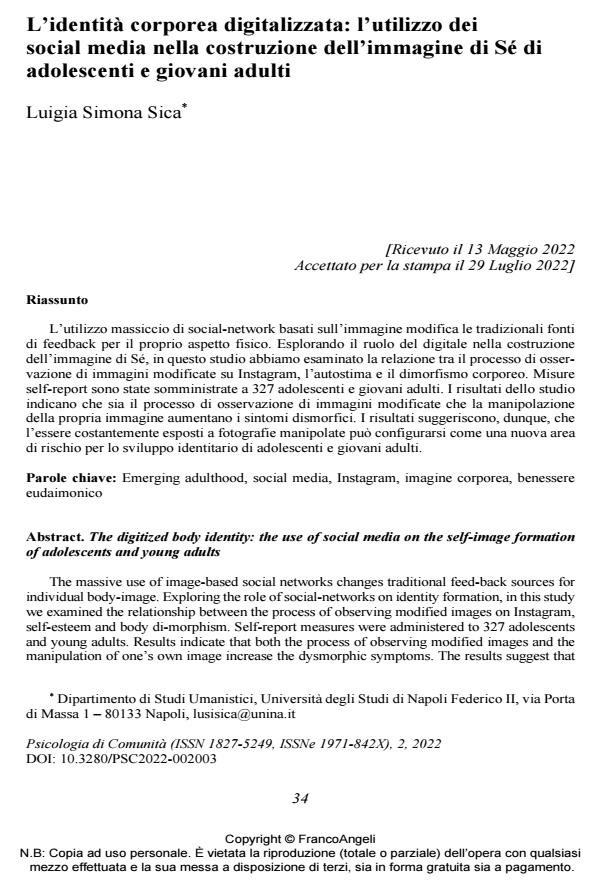L’identità corporea digitalizzata: l’utilizzo dei social media nella costruzione dell’immagine di Sé di adolescenti e giovani adulti
Titolo Rivista PSICOLOGIA DI COMUNITA’
Autori/Curatori Luigia Simona Sica
Anno di pubblicazione 2022 Fascicolo 2022/2
Lingua Italiano Numero pagine 22 P. 34-55 Dimensione file 257 KB
DOI 10.3280/PSC2022-002003
Il DOI è il codice a barre della proprietà intellettuale: per saperne di più
clicca qui
Qui sotto puoi vedere in anteprima la prima pagina di questo articolo.
Se questo articolo ti interessa, lo puoi acquistare (e scaricare in formato pdf) seguendo le facili indicazioni per acquistare il download credit. Acquista Download Credits per scaricare questo Articolo in formato PDF

FrancoAngeli è membro della Publishers International Linking Association, Inc (PILA)associazione indipendente e non profit per facilitare (attraverso i servizi tecnologici implementati da CrossRef.org) l’accesso degli studiosi ai contenuti digitali nelle pubblicazioni professionali e scientifiche
L’utilizzo massiccio di social-network basati sull’immagine modifica le tradizionali fonti di feedback per il proprio aspetto fisico. Esplorando il ruolo del digitale nella costruzione dell’immagine di Sé, in questo studio abbiamo esaminato la relazione tra il processo di osservazione di immagini modificate su Instagram, l’autostima e il dimorfismo corporeo. Misure self-report sono state somministrate a 327 adolescenti e giovani adulti. I risultati dello studio indicano che sia il processo di osservazione di immagini modificate che la manipolazione della propria immagine aumentano i sintomi dismorfici. I risultati suggeriscono, dunque, che l’essere costantemente esposti a fotografie manipolate può configurarsi come una nuova area di rischio per lo sviluppo identitario di adolescenti e giovani adulti.
Parole chiave:Emerging adulthood, social media, Instagram, imagine corporea, benessere eudaimonico
Luigia Simona Sica, L’identità corporea digitalizzata: l’utilizzo dei social media nella costruzione dell’immagine di Sé di adolescenti e giovani adulti in "PSICOLOGIA DI COMUNITA’" 2/2022, pp 34-55, DOI: 10.3280/PSC2022-002003